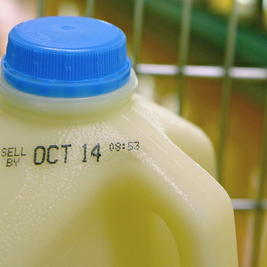 A few weeks ago I ran into a store and quickly grabbed a bottle of white wine. I was hot, it was chilled and dinner was desperately simple so not much thought went into my purchase.
A few weeks ago I ran into a store and quickly grabbed a bottle of white wine. I was hot, it was chilled and dinner was desperately simple so not much thought went into my purchase.
After opening the bottle at dinner and taking a sip, I had a poignant moment. Though only 1 year old, this white wine was well past its optimal freshness. Unlike milk, wine doesn’t come with an expiration date, which can sometimes lead to randomly grabbing a disappointing bottle.
Very few white wines are made to improve with age and most deteriorate quickly. When buying white wines not intended for long-term storage, always buy the most recent vintage. I am not referring to sacred Burgundies or cult chardonnays. This tip is for wines intended for immediate consumption.
Many mid-market chardonnays are made from very ripe grapes with low acid and oak dimensions. Over time the fruit flavors diminish and you are usually left with a flabby, bitter taste and alcohol.
Light-bodied wines like sauvignon blanc and pinot grigio are appealing because of the refreshing, fruity and zippy acid. But a year or two after their release, many begin to lose these traits and become less than what they were intended to be.
The advice is the same for ordering white wine while dining out. If you ordered a 2009 from the wine list, check the bottle so you’re not served a 2008.
So, plan your aging strategy for your premium quality whites but for all the others, drink up.
THE VALUES
- 2009 Cupcake Sauvignon Blanc, New Zealand/California (about $12 retail)
- 2009 Ecco Domani Pinot Grigio, Italy (about $13 retail)
THE SPLURGES
- 2008 Spy Valley Sauvignon Blanc, New Zealand (about $19 retail)
- 2008 Brancott Reserve Sauvignon Blanc, New Zealand (about $22 retail)